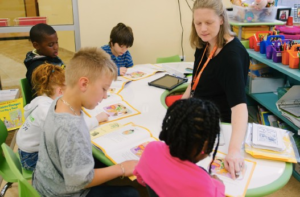 At Collaborative Classroom, we are fully invested in supporting and learning alongside the districts and schools that adopt our curricula. These long-term partnerships are key to our mission.
At Collaborative Classroom, we are fully invested in supporting and learning alongside the districts and schools that adopt our curricula. These long-term partnerships are key to our mission.
We recently had the pleasure of interviewing two valued partners, Michelle Rodriguez, EdD, superintendent of Pajaro Valley Unified School District (PVUSD) in Watsonville, California and Linda Diamond, president of the Consortium on Reaching Excellence in Education (CORE). These remarkable literacy leaders have worked together for years using our SIPPS curriculum as a central driver in the quest to get all students reading at grade level by the end of third grade.
In this interview with Dr. Kelly Stuart and Dr. Gina Fugnitto of Collaborative Classroom, Dr. Rodriguez and Linda Diamond share their insights about the current reality of distance learning, how and why SIPPS is a key component of PVUSD’s impressive achievements in improving student literacy outcomes, and how a strong change-management approach has positioned PVUSD for long-term success. We hope that you find this interview stimulating and helpful for your own practice.
Distance Learning
Collaborative Classroom: Let’s start with a question that is top of mind for district leaders everywhere. We’re having this conversation at the end of April, and schools in California have been closed since mid-March. How is Pajaro Valley doing with its distance learning plan?
Michelle Rodriguez: We began formulating contingency plans for distance learning quite early. Our planning started in late January, and we accelerated those plans in February once we saw what was happening north of us, in Washington state. From the beginning of our planning, equity was central to all decisions, not something that we layered onto our plan after the fact.
Within a couple of days of our March 16 school closures, we were able to work with our two unions and secure a Memo of Understanding that allowed over 17,000 students a day to get online. We were able to get Chromebooks in the hands of every student in grades 1–12. I have always believed in contingency planning, and we are already looking ahead and planning for the fall.
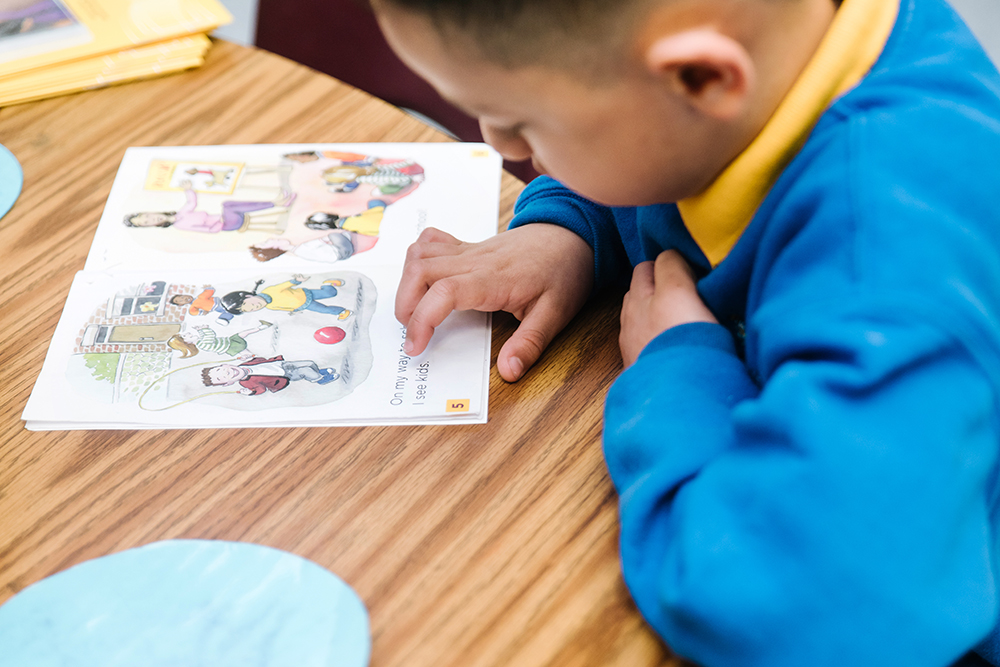
Collaborative Classroom: What is working well in Pajaro Valley’s distance learning?
Michelle Rodriguez: One key was to capitalize on the existing strengths of our district. We already believed in personalized learning; I have a saying that “one size fits none.” Our younger students spend part of their regular school day in personalized learning programs. So, although we are not requiring that every teacher do the exact same things during distance learning, we are making sure that we continue SIPPS rotation/lessons, which are an important element of our literacy success.
Our educators in grades 1–3 are teaching SIPPS lessons remotely via Zoom, and we provided them with the right guidance upfront. CORE consultants Ann Leon and Gail Adams are always working closely with us to ensure high-quality SIPPS implementation, and before we closed our schools, they helped prepare our teachers for doing SIPPS instruction remotely.
Collaborative Classroom: How did the CORE consultants support Pajaro’s teachers in successfully using SIPPS during remote learning?
Linda Diamond: Initially, our consultant Ann Leon worked with Lynda Pate, early literacy coordinator at PVUSD, to prepare packets. These were not typical packets of work. The initial packets represented work that students had already done, allowing them to practice with material for which they had already received explicit instruction. The packets included SIPPS materials such as spelling-sound cards, word lists, sight words, and decodable text.
Next, Lynda and Ann developed a document highlighting best practices for distance learning with SIPPS. The three pillars of this document were as follows: instruction still needed to be explicit and direct; teachers needed to facilitate live lessons; and teachers determined times to meet with small groups of children.
Professional learning and job-embedded coaching are essential, especially during this time.
Professional learning and job-embedded coaching are essential, especially during this time. CORE’s professional learning efforts at Pajaro Valley are centered around three groups: teachers, instructional assistants, and principals. Our professional learning for principals focused on the best practices I just mentioned. (Having worked with Dr. Rodriguez for many years, I know that she views principals’ knowledge of SIPPS as incredibly important.)
The teachers’ professional learning focused on how to provide explicit instruction with SIPPS remotely. Additionally, Pajaro Valley teachers are now recording their SIPPS lessons on Zoom so that CORE consultants can review them and provide feedback, allowing professional learning to continue.
A four-part learning series was also recently designed to support the instructional assistants in learning more about SIPPS. This series is being delivered by Ann Leon and Lynda Pate. Instructional assistants who are well trained have been integral to Pajaro Valley’s success with SIPPS and to the district’s ability to maintain the appropriate group size for instruction.
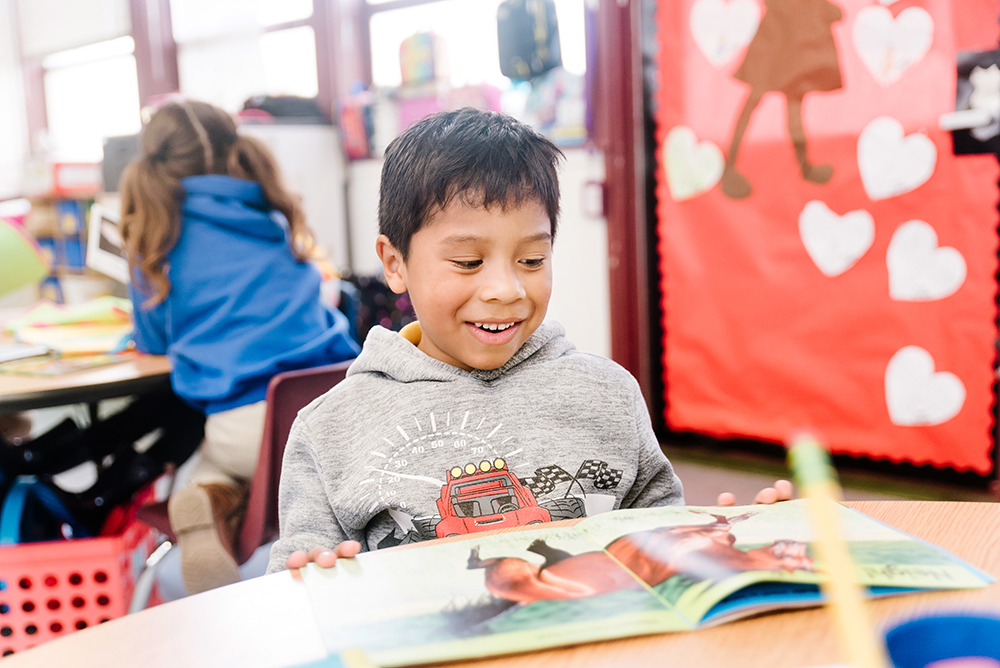
Collaborative Classroom: How are you supporting Pajaro Valley teachers and parents during this time?
Michelle Rodriguez: We set up a parent hotline that allows parents to call and ask questions regarding their child’s current education setting. Last week we had 775 calls to help parents in our three most-spoken languages (English, Spanish, Mixteco Bajo). If they don’t wish to use the phone service, parents can submit an electronic help ticket. Based on the submitted question(s), we push out the appropriate support digitally.
In addition, two days a week parents can drive to our district parking lot to get immediate help with the technology devices. We have technicians available to provide car-side service so that no one needs to leave their car. Last week, we serviced 117 families.
For teachers, we have four tech TOSAs (Teacher on Special Assignment) and several tech liaisons at each school site. Those colleagues are providing assistance to teachers directly. Last week, one-third of our teachers received assistance. It really shows me their willingness to adapt and change during this time. We believe in iterating and are willing to start. For the last several years, we have taken on a pilot-to-scale approach that is grounded in our core values of innovation, equity, and sustained excellence. This social innovation mindset was highlighted by our teachers’ willingness to adapt and change during this time.
The Pajaro Valley-CORE Partnership to Implement SIPPS
Collaborative Classroom: Having collaborated for years, the two of you have a wealth of experience when it comes to the necessary ingredients for successful literacy outcomes and for the development of teacher capacity. Can you share about the work you two have done together?
Linda Diamond: We have worked together in two California districts now, Santa Ana Unified and Pajaro Valley. An approach Dr. Rodriguez uses in our partnership is targeting schools to start an initiative. This has meant that instead of change being forced onto a school from the outside or the whole district at the start, change is molded from within and takes into account the best ways to work with adult learners. By targeting schools via an initiative and then showcasing results, other principals and teachers WANT to be part of the new professional learning and change in programs.
Dr. Rodriguez also brings certain qualities to her work that have enabled our partnership to flourish. She is a continual learner and, speaking from all my years of experience, this is an important and rare quality in a superintendent. She is also highly responsive. After each visit she always offers positive feedback and assistance to further support her educators.
Finally, I think it is important to note that Dr. Rodriguez has a deep understanding of literacy, and this expertise allows her to engage fully with the work and speak powerfully about its importance.
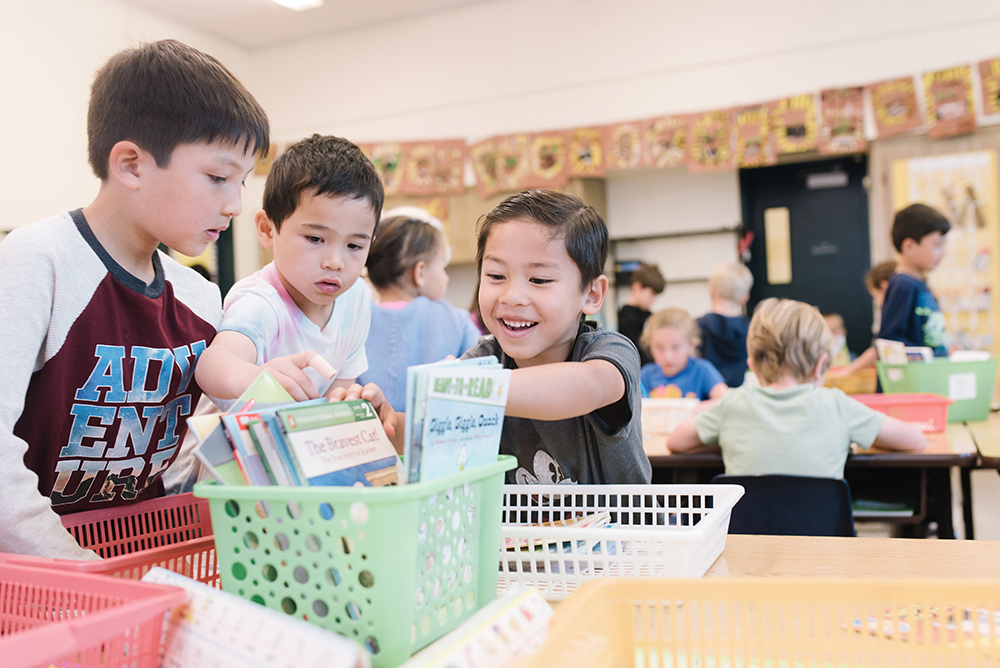
Collaborative Classroom: Dr. Rodriguez, what experiences during your career have given you this literacy knowledge and perspective? How has this helped you in your work leading Pajaro Valley?
Michelle Rodriguez: Literacy has always been my love. I started as a first-grade teacher. I have also had experience in Reading Recovery, guided reading, coaching, and as a writing consultant. All of this has given me a unique understanding of the power of literacy. As a learner with a willingness to evolve, I am now a true believer in what we know about the science of teaching reading, along with the brain research on how children learn. I recognize now that some of the approaches that I used to teach students back when I worked as a Reading Recovery teacher encouraged students to use strategies such as three-cueing systems that did not strengthen their knowledge base for higher-level reading.
To keep me grounded in practice and to give me a depth of understanding of research in action, I typically visit two schools each day before coming into my office, and on Wednesdays, I engage in conversations with school staff called “Conversations with the Superintendent.”
Collaborative Classroom: Linda Diamond, in your work and in your role at CORE, you are dealing with all aspects of literacy. That said, we also know that the instruction in the SIPPS program is linked in a fundamental way to your understanding of the type of reading instruction that is most effective for children. From your perspective, what is so powerful about SIPPS instruction?
I knew Dr. John Shefelbine (the author of SIPPS) when he was developing the program. John had a great depth of understanding of the research around reading instruction. When considering how instruction should be structured, he knew the importance of clarity and explicitness of routines, as well as the vital role of consistent corrective feedback . . . And because John was a teacher of reading himself, SIPPS lessons are grounded in that experience, with a straightforward design that is intuitive and makes sense.
Linda Diamond: I knew Dr. John Shefelbine (the author of SIPPS) when he was developing the program. John had a great depth of understanding of the research around reading instruction.
When considering how instruction should be structured, he knew the importance of clarity and explicitness of routines, as well as the vital role of consistent corrective feedback. He also recognized the power of working in small, differentiated groups and having decodable books that match the instruction so that students are practicing reading in every lesson. For SIPPS he came up with an ingenious approach to sound-spelling cards (particularly the vowels) and the concept of a preposition as a way for kids to retain the information.
From an assessment perspective, he did an excellent job of building in program mastery assessments so that educators are able to know if instruction is working. And because John was a teacher of reading himself, SIPPS lessons are grounded in that experience, with a straightforward design that is intuitive and makes sense.
Collaborative Classroom: Dr. Rodriguez, as a result of your laser focus on literacy and your partnership with CORE to implement the SIPPS program, what have you noticed about your students as readers?
I have noticed that our students have greater confidence and take more risks as learners and as readers than they did before we began using SIPPS. I see them read and write using knowledge they have built in SIPPS, such as the multisyllabic word work, and I see that teachers no longer have to do as much scaffolding.
MIchelle Rodriguez: During the school year, I visit two schools each day. This gives me an understanding of how students are doing as readers and keeps me grounded in practice.
I have noticed that our students have greater confidence and take more risks as learners and as readers than they did before we began using SIPPS. I see them read and write using knowledge they have built in SIPPS, such as the multisyllabic word work, and I see that teachers no longer have to do as much scaffolding. The students learn new vocabulary and are able to infer meaning. In addition, we have also seen our math scores increase, which I attribute to an overall change in expectation.

Since working with CORE to implement SIPPS and build capacity for MTSS, Pajaro Valley has experienced a 20 percent increase in achievement among first-grade students in the SIPPS program. Scores have moved from 74 percent proficiency in coding and comprehension to 94 percent proficiency today. The full CORE case study can be found here. While SIPPS is central to Pajaro Valley’s literacy efforts, the district’s full approach is described here. (Image credit: CORE)
Change Management
Collaborative Classroom: Dr. Rodriguez, you recently presented a poster session at the Carnegie Summit, highlighting the SIPPS program as your core strategy for getting students to grade level by third grade. The poster itself is helpful for other districts as they consider everything that goes into a focused effort toward grade-level reading. What can you share about your change-management theory?
Michelle Rodriguez: Change management has to be highly intentional. It begins by developing a sense of urgency around the change we are envisioning.
We then build a core team that can pilot the new approach; in the initial phase, it is vital to include teachers who want to be innovative and establish new successes with their students. We also set our vision as clearly as possible: In this case, it was our commitment to all students reading at grade level by the end of third grade.
To set ourselves up for success, we are mindful of developing capacity at all levels and doing so strategically. For this initiative, we focused first on district-level coaches and principals. We needed the coaches to be strong at job-embedded coaching to successfully support teachers in their classrooms.
It can be easy to lose momentum over time, and so we must consciously sustain our commitment to the change. Everyone in the organization has a role to play, and we all must understand that it is a multi-year process. In this case, the change needed to become the way our district approached early reading.
I also want to highlight a facet of change management that frequently gets overlooked: Do not be short sighted, especially with fiscal challenges. For our reading initiative, the significant financial investment we made upfront to ensure that all students are at grade level by third grade will actually save us millions of dollars later.
I also want to highlight a facet of change management that frequently gets overlooked: Do not be short sighted, especially with fiscal challenges. For our reading initiative, the significant financial investment we made upfront to ensure that all students are at grade level by third grade will actually save us millions of dollars later.
Finally, it is vital to select a strong professional learning partner. For us, that partner was CORE as we implemented the SIPPS program. Find an implementation partner you can stick with for the long term, one that is truly focused on developing your district’s capacity.
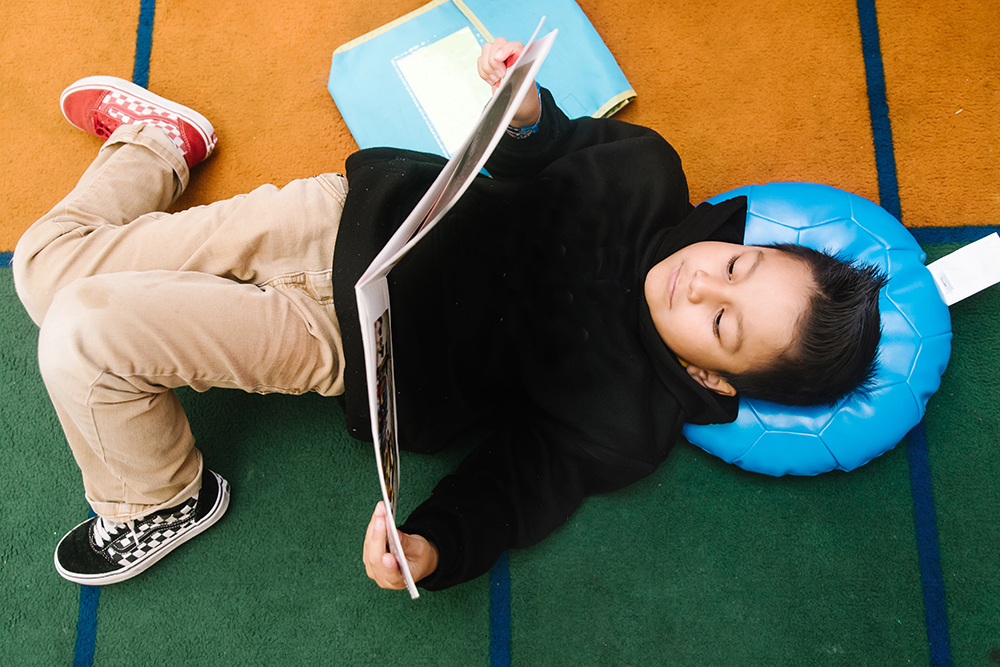
Looking Ahead to Fall 2020
Collaborative Classroom: This last question is for both of you. Given our current reality, school may look very different in the fall. How should literacy educators think about getting started for the next school year?
Linda Diamond: Intensive intervention is going to be more important than a core curriculum. Assessing students early will drive what happens in the fall. SIPPS should be seen as a foundation and intervention program. Students will likely need more intensive work than in previous years.
I see less learning loss in a district like Pajaro Valley because they built their plan early with equity in the forefront, had already invested in technology, and have continued their professional learning work remotely.
My district and I believe in ambidexterity, the ability to do two things at once.
Michelle Rodriguez: My district and I believe in ambidexterity, the ability to do two things at once. Right now we’re all in the middle of this pivot to distance learning. It is intense and engrossing work to execute successfully, but at the same time we need to be actively and fully engaged in planning for the future. For example, here at Pajaro we are considering a “jump start” two weeks before school starts in August, with a plan for social distancing. We have to be prepared to pivot again, and that means planning for what’s to come. If other districts are looking for support during this time, I am sharing our plan, Pajaro Valley’s Student Centered Access and Equity During COVID-19. The plans continue to change rapidly. I would recommend focusing on planning for multiple scenarios so we are ready to serve our students.
***
To learn more about the support both CORE and Collaborative Classroom are providing over the summer, read our new blog post, “Resources for Reconnecting and Accelerating Student Learning,” which features assessments, professional learning opportunities, and more about SIPPS implementations.

President of CORE
About Linda Diamond
Long an advocate for explicit and systematic instruction, Linda Diamond, president and founder of the Consortium on Reaching Excellence in Education (CORE), previously served as a public school teacher, principal, director of curriculum and instruction for a K–12 school district, and senior policy analyst with an emphasis on school to career, charter schools, and school reform. Diamond is also the co-author of CORE’s professional books, Teaching Reading Sourcebook, Assessing Reading: Multiple Measures, and Vocabulary Handbook.
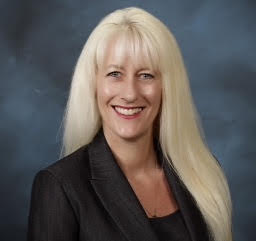
Pajaro Valley superintendent
About Michelle Rodriguez
Dr. Michelle Rodriguez, superintendent of schools in Pajaro Valley Unified School District, is a leader of uncommon ability engaging the educational community in an authentic and intentional transformation process that values innovation, affirms student strengths and capacity, increases rigor, inspires joy, and prepares all students to be college and career ready. Dr. Rodriguez has been dedicated to students in urban and rural low-socio-economic districts for more than 27 years, with a focus on vulnerable student populations. She embraces the powerful, long-term responsibility of improving the lives of students, families, and the educational community. Because of the implementation of many new, innovative programs at her district, she has been recognized for her excellence in leadership through the 2019 United Way Community Hero Award, the 2019 Broad Fellowship, and Pajaro Valley’s acceptance in 2019 to the League of Innovative Schools.
